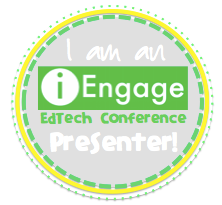As many of you know, I'm an addict when it comes to reading professional books. The minute a new title is being discussed on social media that piques my interest and supports my ability to implement next practices in literacy with my students, I must get my hands on it immediately. As a teacher, literacy leader and lifelong learner in the education field, I must take charge of my own professional development. Right?
When The Megabook of Fluency by Timothy Rasinski and Melissa Cheesman Smith arrived on my doorstep, I turned into that heart-eyed smiling emoji. The book is just what it claims to be, MEGA, and it's filled with amazing, hands-on fluency practice for students that can be used straightaway. Just as Jennifer Serravallo gives you hands-on strategies to support students with reading and writing, Rasinski and Smith provide 50+ engaging strategies to nurture students' fluency in The Megabook of Fluency! The book even gives you access to an online site with downloadable resources. Cha-ching!
The Megabook of Fluency is not a front cover to back cover type of read, but a handy guidebook of sorts. The format allows teachers to choose from research-based strategies that will best support their students' fluency needs. Check out the Table of Contents!
Melissa Cheesman Smith's wrote an article, Today, Choose Joy: Joyfulness in Fluent Reading, explaining more about her co-authored book. I added an image taken from the article, but click the link above to read it in full.
Since I'm a huge fan of the book, I've added some quotes and pictures taken from the book, as well as tweets from the authors giving you further insight into The Megabook of Fluency.
- A growing number of studies have examined the effects of authentic fluency instruction. By "authentic," we mean real reading of real texts for real purposes, to communicate meaning. We contrast authentic fluency instruction with programs that tend to require readers to increase their reading speed (p.9).
- If fluency concerns are not addressed early, during the foundational years, it is likely that those concerns will find their way into the middle school and high school grades (p.10).
- Furthermore, because fluency is a foundational competency, difficulties in fluency can also lead to difficulties in content areas that rely heavily on reading (p.10).
- ...without a solid foundation in reading fluency, other reading competencies, such as comprehension and close reading, cannot develop (p.10).
- A more common name often associated with repeated reading is rehearsal. Interestingly, the Common Core State Standards refer to repeated reading as close reading (p.12).
- Research has demonstrated that each time students read a text, their reading improves on many fronts: word recognition, accuracy, automaticity, expression, and comprehension... More importantly, when they move on to a brand-new text to read, their gains "stick" (p.12).
- It is a good idea to provide students with an audience of even just one person for their reading who can provide positive feedback (p.13).
- Despite a growing recognition of the importance of reading fluency in students' reading development, that message is often lost because of how it is typically understood and taught (p17.).
- Richard Allington called fluency "the neglected goal of the reading program (p.18)."
- Additionally, when telling stories and reading to children, we should take the time to talk with them about how we use our voice to help convey meaning to develop an awareness of fluent expressive reading (p.21).
Discover any worthwhile insights? I certainly hope so. If you're on Twitter, you can track down some additional content under the hashtag #TheMegaBookOfFluency, as well as follow the authors, @MCheesmanSmith and @TimRasinski1. The book is definitely worth owning, so if you don't already have a copy, hop on over to Scholastic or Amazon ASAP!
Enjoy the rest of your summer,
Colleen






















































0 comments:
Post a Comment
I would love to hear from you, so please leave a comment. Come back for a visit sometime soon, too! :)